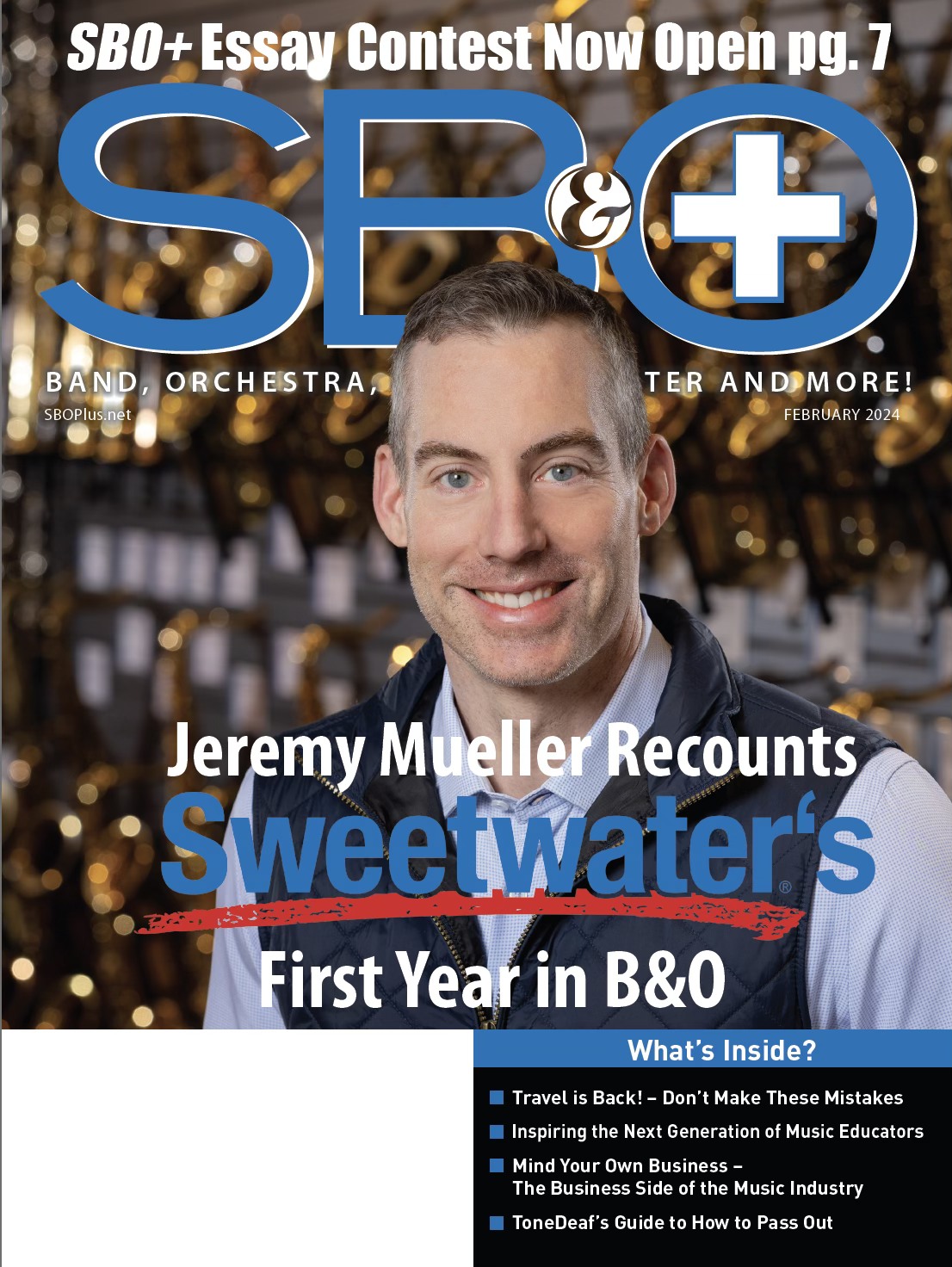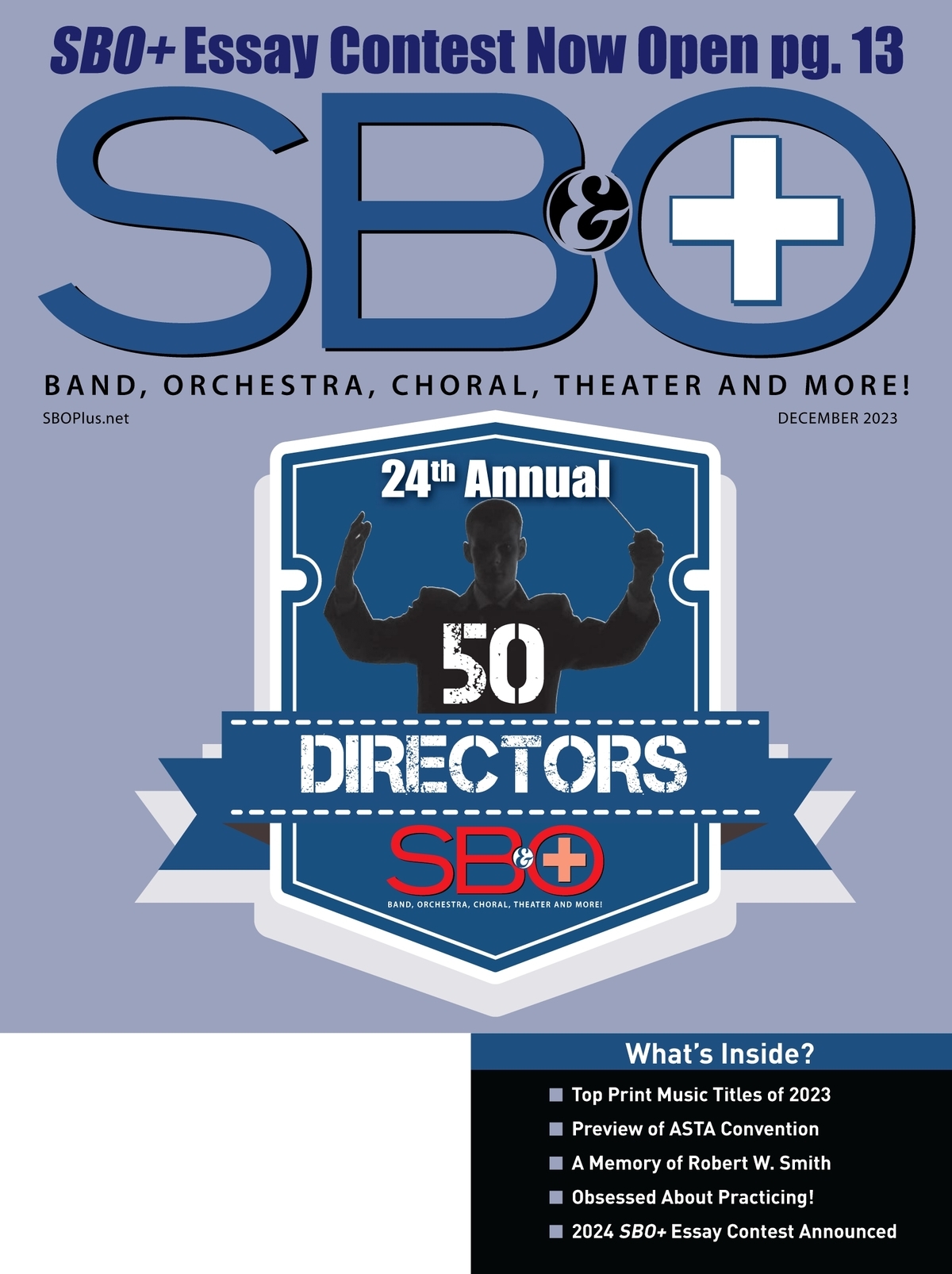EDUCATORS SUBSCRIBE FOR AS LOW AS $0.00! CLICK HERE!
I recently received an e-mail from Dan Franke, the principal of a private school in Audrey, Texas. Mr. Franke was requesting information on how to find software with which he could import music notation and audio files into an application for comprehensive assessments of his son’s daily practice. He explains, “My young son, 11, is mastering piano using the Soft Way to Mozart. It will import songs in the future, but it doesn’t now. It uses MIDI, gives instant feedback, and is like a game to teach musical reading and piano. I have come across Heavenly Harmony, a game to teach a couple of songs where an individual sings the high harmony and gets instant feedback of pitch recognition, but I cannot import other songs or sing the other parts.”
This request challenged me to find solutions for music educators. The obvious choice is to recommend SmartMusic, because its assessment accompaniments answer Dan Franke’s needs by allowing him to create assessable music for his son and other students. SmartMusic’s repertoire of 30,000 songs is impressive, but music educators also need to be able to customize the song catalog. Another solution, converting Finale scores into SmartMusic, is great, but not all music educators and private music studio teachers are advanced Finale users.
After some of analysis of software applications, it became obvious that Sibelius, Encore, CuBase and other notation/sequencing software with Music XML file-exporting capabilities can import nicely into SmartMusic. But music scanning techniques may be the fastest way to create a score from scratch with high accuracy. And as for working with a nearly limitless audio library, there are several applications that convert audio files to MIDI files.
The SmartMusic customization process does require some access to Finale for those who want to create their own accompaniments. While SmartMusic’s low price is attractive, as are its powerful assessment capabilities, not everyone has experience using Finale. But the initial arrangements can be created in a variety of ways outside of Finale and then simply saved as SmartMusic accompaniments within Finale. In this process, the only element of Finale that needs to be used is its file conversion from the widely available Music XML file type into SmartMusic’s proprietary SMP file format.
It’s incredibly fulfilling to produce customized assessment files for your students’ specific practice needs, with which they can record, assess, and share their results.
SmartMusic assessment files can work wonders for:
#149; Adjudicated contests
#149; Uniform grading
#149; Special curriculum needs
#149; Fast and simple seating auditions
#149; Marching bands competitions
#149; All-State auditions
#149; Honor band auditions
#149; Solo and ensemble contests, especially at the high school level
While Finale is required to create assessable SmartMusic accompaniments, there are alternatives to simply creating the music in Finale. You could scan exiting sheet music, or generate music using any program that can create MusicXML or MIDI files.
Scanning printed music using PhotoScore, SmartScore or SmartScore Lite (included with Finale) can be an accurate and productive way to enter music. Or, music notation scores from Sibelius, Encore or other programs can be saved and exported as Music XML or MIDI files, which can then be opened in Finale. Upon opening these files in Finale, the music can be easily saved as a SmartMusic accompaniment file for practice and assessment that can be used anywhere, anytime.
Once opened in SmartMusic, the SmartMusic accompaniments (SMP files) can be used by both instrumental and voice students to practice with accompaniment and assessment of both pitches and rhythms.
Case Studies
I contacted several teachers who are successfully creating customized assessment repertory in SmartMusic. They were happy to share their methods, along with a few tips on how to best use them.
Tom Zimmerman
Tom Zimmerman teaches music in grades 5-12 at Columbus Catholic School in Marshfield, Wisconsin. He notes, “While I am still in a learning curve of how best to utilize the combination of Finale, SmartMusic, and others for the betterment of the Columbus music students, I will state that the more I learn, the more I understand and appreciate the educational value of these programs for both the students and for myself.”
Zimmerman advises that anyone interested in this software first take a course in how to use it. His program uses customized SmartMusic files with the following:
#149; Writing out the difficult rhythms of a composition on a single line, and then having the whole band learn them through counting, clapping, and so forth. This is done with the full band via overhead projector, in small groups, and in lessons.
#149; Similarly working with the melodic, harmonic themes, as well as any counterpoint, pedal-point, and other compositional devices. He says, “With the ease of Finale able to transpose keys, it is easy for everyone to learn all the parts of the music and not just their own parts. As you may guess, this really opens up the ears.”
#149; Using Finale and SmartMusic with jazz improvisation, with written out chord sequences, modes, et cetera.
“Most of the students really take well to this method of learning,” asserts Zimmerman. “They have grown up with computers and expect to use them with everything. To many, the challenge of seeing how many ‘right’ notes and rhythms they achieve is a very good challenge. We have found that the brasses have improved with partials as they now hear the correct notes as they play. Some of the more aggressive students will move ahead on their own and see the other items SmartMusic has to offer. There are, of course, some students who prefer to learn the ‘old fashioned’ way and that is fine, too. My goal is to have them play their best music regardless of the road they take.”
Phil Gray
Phil Gray is a K-6 music and brass teacher in Cold Spring Harbor School District in Huntington, New York. He uses SmartMusic and Finale in two elementary schools.
“First, let me tell you about our SmartMusic journey.” Phil says. “I am the SmartMusic coordinator in our district and we are going into our second full year of providing SmartMusic and microphones to all of our fifth, sixth, and seventh grade music students. The music educators in our two elementary schools utilize the SmartMusic program in creative ways: we have scanned music from our file cabinets into Finale and made assignments for students to practice along with; we have also scanned parts into Finale that have been rearranged by the teachers to fit our instrumentation. Having the ability to send a SmartMusic file with an accompaniment to our young students has been an invaluable part of our teaching.”
Phil continues, “The impact of having SmartMusic along with the ability to scan any piece of music into Finale has been tremendous in our district.” With the students having the capability of instant assessment:
#149; Students gain valuable feedback for how to solve problems.
#149; Parents get involved in the learning process of the young musicians.
#149; Students have more fun practicing at home with the added accompaniments.
#149; Teachers are able to accurately measure the progress of students’ at-home practice time.
And the results have been noticed beyond the music room. “The district’s superintendent came up to me in the last two weeks of school last year and said that SmartMusic was working as evidenced in our concerts throughout the year,” says Gray. “Due to this, the district passed our budget and I put another order in for 350 SmartMusic licenses for next school year.”
Phil deRosier
Phil deRosier is the band director at Salk Middle School in Elk River, Minnesota.
Phil explains, “I have used SmartScore 5 to scan the ensembles that my entire 6th grade band performs in the spring as part of our Solos and Ensembles Night. I scan the ensemble music into Finale using SmartScore. I find that I get about 98 percent accuracy with the scan, and it doesn’t take very long to clean up the rest of the score using Musitek’s built-in software. It usually takes a half-hour to scan and clean a trio of about 36 measures. From there, I import it directly into Finale. There’s a pretty natural interface for doing this. Once I have it in Finale, the rest of the job is a snap because Finale has really streamlined the process of creating SmartMusic assignments. Then I simply make my part assignments for the kids through SmartMusic and I’m done. I can then use SmartMusic Impact to track and grade my students’ progress.”
Phil deRosier has been doing this for five years and has found that the increasing compatibility between Finale and SmartMusic has made his job easier.
“The kids really value having this music at home to practice, and they have told me so,” he states. “When I give the students their self evaluation after the Ensemble Night, many students say that it was the single most important part of their preparation for the event.”
National teaching standards and state and district assessment tests have held teachers accountable for the quality of instruction, based on how well their students learn. Consequently, with the decline of student enrollment and school budgets, music educators can be pressed to validate the excellence of their instruction with accurate documentations beyond aural recordings. Unfortunately, many administrators are driven by numbers. Therefore, music performance-oriented teachers cannot be exempted from the rigors of assessment, even though this often intensifies responsibilities and increases the time commitment beyond classroom rehearsals. SmartMusic is the most complete assessment package that works seamlessly between the classroom and home practice providing data assessment and of students’ music performances without undue burden.
Three significant technological improvements make it easier for music educators to create and customize SmartMusic accompaniments. First, significant improvements in scanning programs have made score entry a quicker way to create a score for import into Finale to convert to SmartMusic accompaniment files. Second, Music XML has become a powerful conversion tool for importing notation and some sequencing data files into Finale. Notes, rhythms, time and key signatures along with music nuances like text, lyrics, dynamics, articulations and chord symbols are more accurate. And last but not the least, Finale 2011 converts scores to SmartMusic easier than ever before, making it possible for even the most novice Finale users to easily produce SmartMusic accompaniments. So feel free to create and edit with your own favorite software application, including Sibelius, Encore, or over 80 other programs.
Don Ed Long of Independence, Missouri summarizes his success with SmartMusic’s assessment capabilities like this: “SmartMusic’s integrated Grade Book is helping music educators make the most of assessments. Not only do student musicians have the option of performing assessments at school or at home, but all of the data collected is accessible online by the director, the students, parents, or school administrators.” This creates an unparalleled use of technology to administer assessments and track data, which is an essential facet of today’s education scene.
Dr. John Kuzmich Jr. is a veteran music educator, jazz educator and music technologist with more than 41 years of public school teaching experience. He is a TI:ME-certified training instructor and has a Ph.D. in comprehensive musicianship. As a freelance author, Dr. Kuzmich has more than 400 articles and five textbooks published. As a clinician, Dr. Kuzmich frequently participates in workshops throughout the U.S., Europe, Australia, and South America.
For more information, visit www.kuzmich.com.






